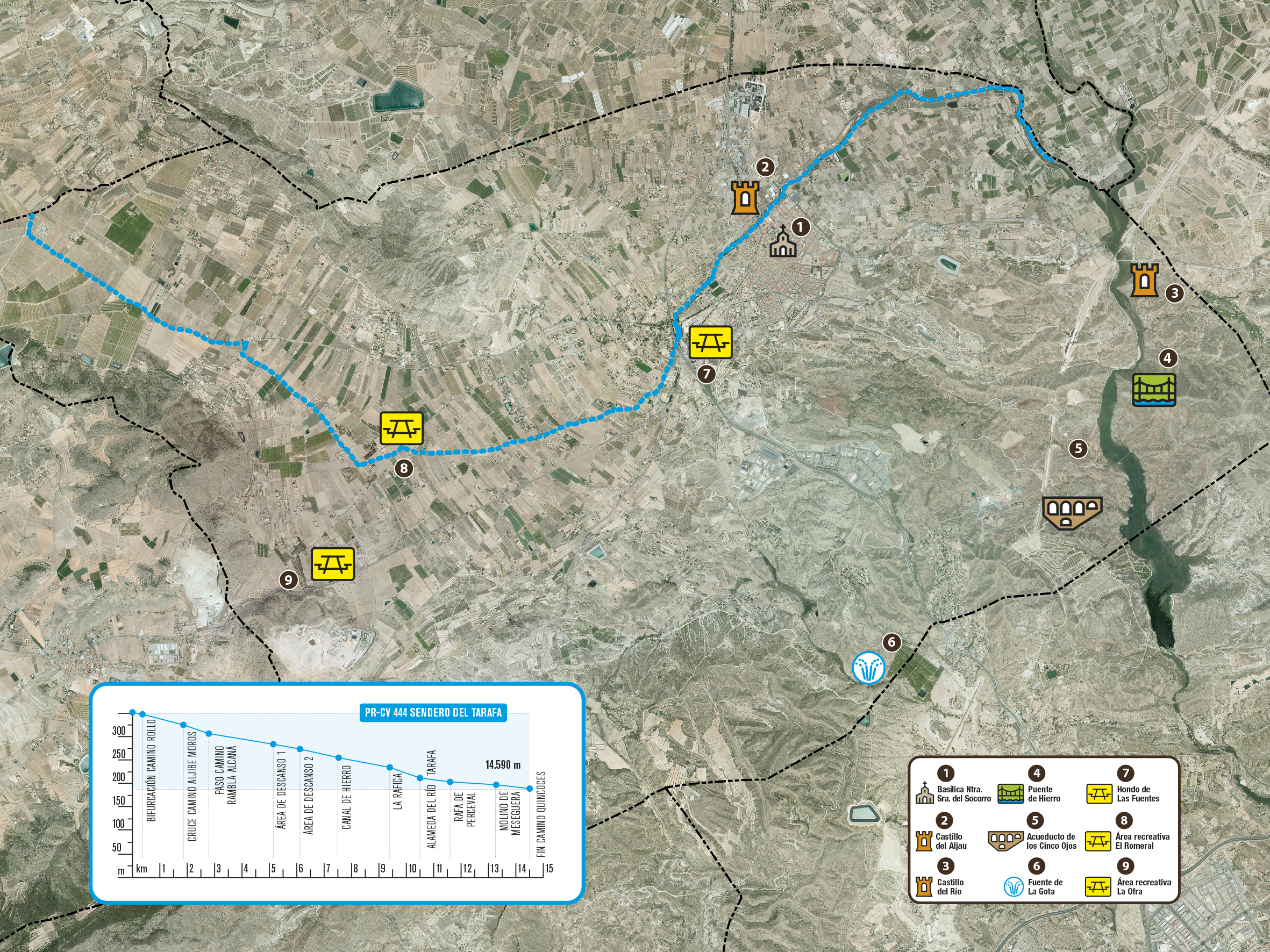TIME
3h. 15 min.
TRAIL TYPE
Walking
DIFFICULTY
Medium
DISTANCE
11232 metres
This itinerary will allow visitors to find out more about Tarafa river’s ecosystem as it runs along Aspe’s local council. Our starting point is at the border with La Romana council, in the Rollo track. Here, Alcana natural site adopts the shape of a sedimentary plain marked by the surrounding topography and the flood plain deposits. This is a traditional agricultural area where we may still observe different typical farming houses. Our route continues along Aljibe de los Moros track, from where we can visit the restored Arabic hydraulic infrastructure of the same name. Following, we shall take Rambla de la Alcana and El Romeral tracks.
Next, we take the old Hondon road used in the pilgrimage of Our Virgen de las Nieves, patron of the town, held on every even numbered year. Our first rest area leads to the cycling tourist trail made available during an environmental restoration carried out by the Jucar Hydrographic Confederation. We head along this trail to reach the second rest area by Sierra de Ors track, before returning to the river course by crossing Tolomo Bajo track. Among its highlights are Canal de Hierro (19th century), built on the same year than the Eiffel Tower opened, at the height of iron’s popularity as a construction material. Our itinerary continues along the flood plain, passing through Elche road (CV-84) tunnel to reach Hondo de Las Fuentes, a meeting place that hosts events such as “Dia de la Mona” and “La Jira”.
At this point, we cross La Romana (CV-846) road and head along the river course towards La Rafica, where we will find two weirs from the 19th century. These were built to collect water to be diverted in order to power the flour mills and to irrigate the crop fields. Due to the constant presence of water and food for a wide range of wildlife, our route becomes enriched by an exuberant waterside vegetation, with elm and poplar groves among the most remarkable examples. Tarafa river runs through the town of Aspe, where Castillo del Aljau castle (a 14-15th century medieval fortification) and Puente del Bano (an 18th century bridge originally made from stonework) are located.
We continue marching down the river where, after passing Aspe’s water filtration plant, we shall find Rafa de Perceval (a 19th century weir built to divert river water for irrigation). Fuente de Barrenas fountain is noted for being the original supply of drinking water to Elche via the waterworks comprising the 18th century Puente de los Cuatro Ojos and Puente de los Cinco Ojos bridges. On our last leg towards Quincoces natural site, we can still see the remains of flour mills that existed in the area, where Meseguera is the most remarkable example. Once at the Quincoces track, we will have reached the end of our short distance trail.



